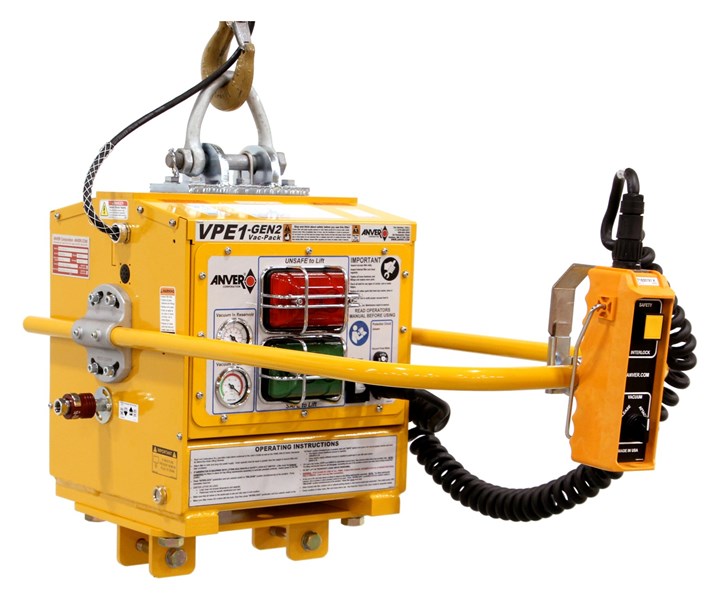Energy saver system lowers vacuum generator power usage, reduces noise
Anver Corp.’s Energy Saver technology is now available to reduce operating costs and increase safety on all of its electric- and air-powered vacuum generators.

Source | Anver
Anver Corp.’s (Hudson, Mass., U.S.) Energy Saver technology is now available on all of the company’s electric- and air-powered vacuum generators for use in composites processing. Anver says its Energy Saver technology quiets the vacuum lifter, lowers power usage and reduces pump wear and tear while keeping the lifter running safely. This technology reduces compressed air and electric power usage, which Anver says results in reduced total-cost‑of‑ownership (TCO) and improved profits.
When a pre‑set vacuum level is reached, the Energy Saver system shuts off the vacuum pump motor or the compressed air supply to the venturi pump, conserving electric power or compressed air and reducing noise. The vacuum level is constantly monitored, and the pump immediately re-energizes when a vacuum drop is detected, allowing the pre-set level to be quickly recovered.
Anver developed its Energy Saver technology to lower operating costs and improve the working environment wherever the company’s electric and venturi air operated vacuum generators are used. The Energy Saver system instantly recovers safe vacuum levels when necessary, protecting the integrity of the products the lifters are handling.
Related Content
-
Plant tour: Joby Aviation, Marina, Calif., U.S.
As the advanced air mobility market begins to take shape, market leader Joby Aviation works to industrialize composites manufacturing for its first-generation, composites-intensive, all-electric air taxi.
-
Plant tour: Albany Engineered Composites, Rochester, N.H., U.S.
Efficient, high-quality, well-controlled composites manufacturing at volume is the mantra for this 3D weaving specialist.
-
TU Munich develops cuboidal conformable tanks using carbon fiber composites for increased hydrogen storage
Flat tank enabling standard platform for BEV and FCEV uses thermoplastic and thermoset composites, overwrapped skeleton design in pursuit of 25% more H2 storage.

.jpg;width=70;height=70;mode=crop)











